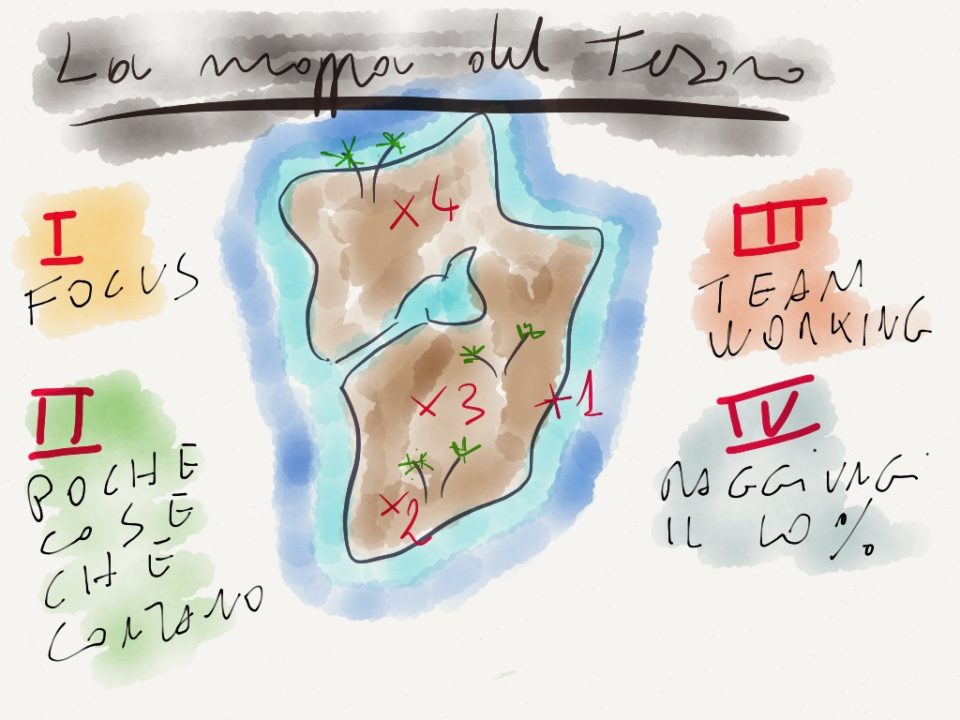Where did the entrepreneurial dream go?
Any company that has gone through its founding phase unscathed is, from that moment on, increasingly focused on making the same things happen more efficiently, chasing what it believes to be its virtuous loop. Moreover, this loop is sustained by a strong commitment, determined first by the adventure of founding something new and then by the positive results, if there are any. This is the phase in which everything happens in a linear way without major restructuring of the original business idea: it is a more or less long period during which if the “chocolate-filled cookie” sells a little less, it will react with the “double filling”.
But at a certain point, the organization goes into crisis: this happens very often. The crisis I’m referring to is the state in which a company finds itself when the operations it has always relied on lose balance. Initially, this happens rather slowly, there are only weak signals that the organization grasps in a blurry way.
The signals of an organizational crisis
- The management refuses to recognize these signs: it is too intent on continuing its linear journey, which it believes it can accomplish without major changes, possibly by acting further on efficiency: adding a “double-stuffing” or, at worst, cutting costs;
- for many employees, a path of progressive disengagement begins: the best ones begin to contact headhunters, send CVs and slowly leave the company;
- the organization lives in a period of shadow, where fears, alliances that are not very business-oriented and cost-cutting become the main commitments;
- organizational performance jams in increasingly vital gears, and at a certain point even customer engagement gradually declines: purchases gradually decrease.
If it is true that having a high level of engagement on both sides of the business (people and customers) guarantees results that are almost three times greater than the worst possible, the opposite is just as true: if you fray the engagement, the collapse on the main business indicators (productivity, turn over, sales, operating result) is guaranteed.
But how can you get out of this nightmare and revitalise the entrepreneurial dream?
The thought that continually stimulates us is how to get back to the “entrepreneurial dream” and perhaps be able to update it with respect to things that didn’t work or that for social reasons no longer are suitable.
So we’d love to go back and see those cunning and ingenious looks that distinguished the entrepreneurs who made the 20th century successful. Anyway, it would be nice to see entrepreneurs again deciding on leg-shaking investments and already savoring the next step.
Real GAMECHANGERS have understood that the “black gold” of the 21st century is called COLLECTIVE INTELLIGENCE and that their dream must be a “sustainable” one.
How can this new entrepreneurial dream be activated?
We are convinced that the entrepreneurial dreams of the twenty-first century were stolen by an envious pirate who steered his intergalactic ship away from our world and took them away before our entrepreneurs could begin to imagine them.
And that is why entrepreneurs are in crisis: they cannot imagine the future. Without the exercise of imagination it is impossible to undertake, and one can only become a good steward of the existing.
The dreams have been so well hidden in a chest in such a way that only a pirate can achieve.
So what is the silver lining of this bad story?

We have “stolen” the TREASURE MAP from the pirate and have found 4 actions to be carried out in 4 steps:
1. THE FIRST STEP à strategic refocusing
In very few, simple but concrete lines, insert and disseminate in the organization the answers to these 6 critical questions:
- Why can we exist?
- How do we operate?
- What makes sense that we do?
- How can we be successful?
- What is the most important thing for us right now?
- How do we deal with it?
A way to look inward, understand what has changed and gain awareness of what is important to do now. In conclusion, organizations, when they understand what needs to be done, do it and do it well!
2. THE SECOND is to move very little to set everything in motion
One thing at a time, without haste, but only with a healthy sense of urgency. Therefore, for example, it makes no sense to focus on the organizational structure that sustains the current efficiency (the only bulwark for which the system, while creaking, holds up).
In fact, the main processes, organizational charts, job descriptions, committees, policies, governance, etc., respond to the need for efficiency, and the renewal of these aspects, assuming it is considered useful, occurs only after we have rebuilt ourselves. Doing it first is fake.
Because it is a little bit like saying: the organization, the hard one, is the result of the entrepreneurial dream that is being realized.
Moreover, organizing or reorganizing in the strict sense of the term only makes sense after the organization has bonded and put its deeper functions in order: through the development of those few skills that make people work with greater commitment and that are attentive to collective standards of performance.
3. THE THIRD STEP is to imagine a hybrid organizational system
We think that the challenge is to generate a sense of positive urgency around the “6 critical responses”. The most responsive organizational dimension is the TEAM. Because in the team, informality, spontaneity, and a real desire to collaborate come together. It is necessary, indeed, to equip teams with the appropriate tools so that their functioning is genuinely oriented toward enabling what they are called upon to do to succeed:
- Trust
- Vulnerability
- Commitment
- Standards
- Focus on common goals
A hybrid functioning which combines the traditional and necessary efficient structure, able to ensure that what has been planned happens in a linear manner, with an innovative activation of functional and interfunctional teams that work towards a satisfying engagement and a consequent fantastic team performance. In doing that, the same place becomes a context for individual and collective performance.
4. THE FOURTH STEP is to reach the point of no return
If you manage to mobilize 10% of the organization in this way, the energy that will be generated will be able to sustain the next steps.
The next steps are nothing more than lightly accompanying the organization through its change, for example:
- be ready to co-design, reengineer the various hard organizational add ons , as the organization decides they are needed;
- inserting easy tech solutions to anchor the decided activities to a correct and useful ritual;
- activate individual coaching paths to allow each team to develop increasingly high performances. A relay race is won by integrating the results of the components, not by the best single performance;
Within these broad frameworks, facilitate the free and sustainable work of the organization by constantly measuring perceived levels of engagement and performance.
In an interview with Steve Jobs “Steve Jobs talks about managing people“, Jobs says that Apple is still to this day (this is at the end of 2010) a fantastically collaborative company because it is organized as a START UP: the largest and longest lasting start up on the planet.
If we think about how the uranium charge (huge engagement, sky-high performance) in companies is inserted in the moment of their foundation and that it is this charge that sustains them in the long run, even in spite of the organizational anguish that is gradually inflicted as necessary, maybe Jobs was right, it is better to think of oneself as a start-up for life.
In conclusion, the p2p is not yet the model of organizational functioning of the ordinary planned, but it can become the organizational model to generate and maintain continuous active change in companies!

